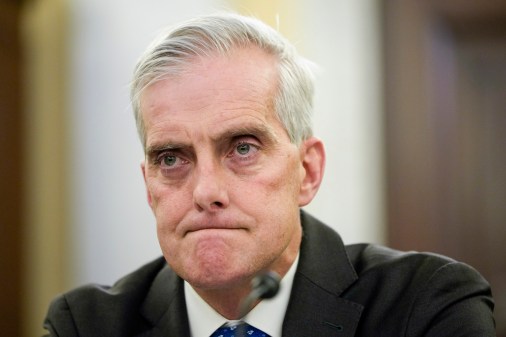New EHR go-live date is July 2020, VA secretary says

The Department of Veterans Affairs electronic health records modernization program that was delayed in early February has a new go-live date for its first hospital: July 2020.
VA Secretary Robert Wilkie told lawmakers Thursday that the “goal” is to have the program debut, as planned, at a Spokane, Washington, facility sometime during that month. But he would not commit to a specific date during his time before the House Veterans’ Affairs Committee — one of two hearings on Capitol Hill on Thursday that involved the VA’s EHR modernization program.
Wilkie said he will now be the highest official overseeing the multibillion-dollar program after he fired his No. 2, James Byrne, in February.
“I would hope it would be earlier,” Wilkie said of the go-live date. “But we are on a glide-path to get there.” The decision to delay the go-live date stemmed from a need for more training at the Spokane site, he said earlier this month. It originally was set to go online March 28.
The EHR was delayed when Wilkie was “not satisfied” with the development of the system, he said Thursday. The project is a massive migration of the electronic health records of millions of veterans from the outdated Veterans Information Systems and Technology Architecture (VistA) platform to a cloud-based commercial Cerner system. But that system was not passing “integration validation” tests in Spokane, John Windom, executive director of the EHRM office, told the House Appropriations Subcommittee on Military Construction, Veterans Affairs, and Related Agencies later Thursday in a separate hearing.
On top of that, there have been struggles to develop the 73 new interfaces that clinicians will use to operate the new system — only 19 of which have programmed so far, said Richard Stone, the executive in charge of the Veterans Health Administration.
All of this also comes with a cost. The VA has requested $2.5 billion in fiscal 2021 to continue updating its EHR, $1 billion more than what it received the year prior. A lot of that comes from the new need to enhanced the VA’s own internal infrastructure — what Wilkie called “ancient buildings” — to support the modernized EHR.
“I am spending millions and millions building closets,” Wilkie said, referring to network closets, “because the facilities, some of which are 100 years or older, cannot accept the kind of infrastructure that we need to get these programs online.
House members on the Veterans Affairs Committee were mostly supportive of the delay, stressing the importance of getting the launch right. But their colleagues from the Appropriations Committee in the second hearing struck a different tone.
“You have repeatedly botched the project,” Rep. Nita Lowey, D-N.Y., said Thursday. “It is our duty to the veterans, to the taxpayers to realize the benefits of this transformation as soon as possible.”



